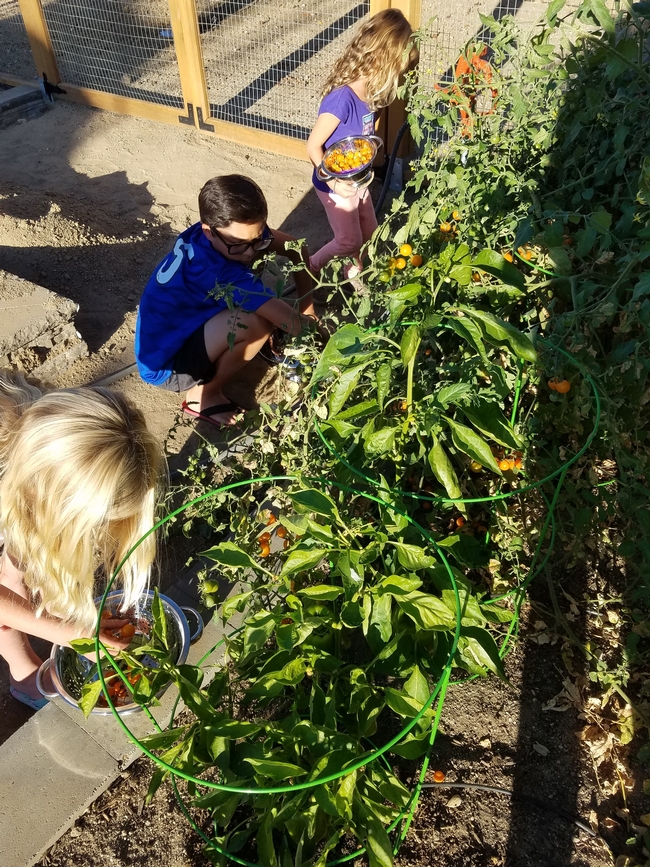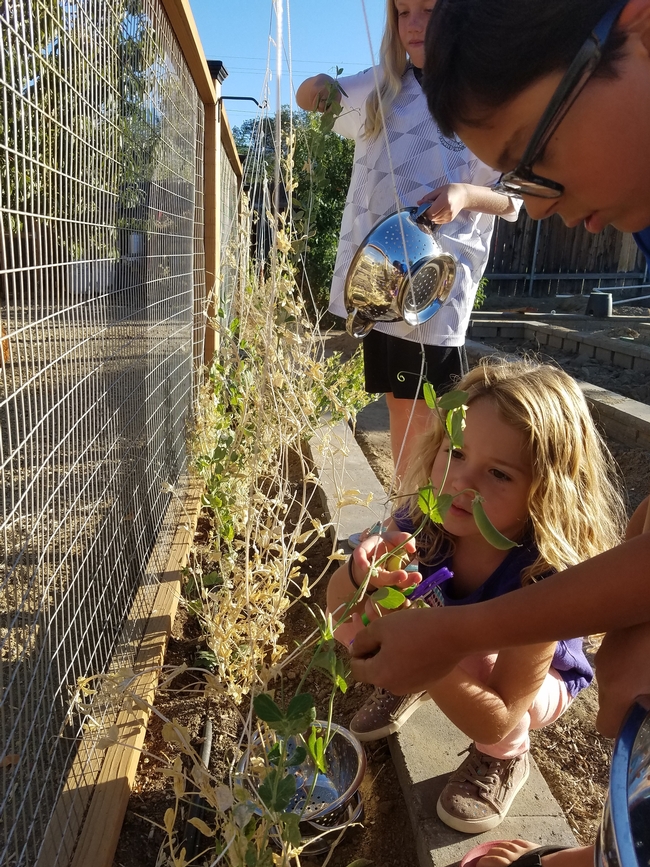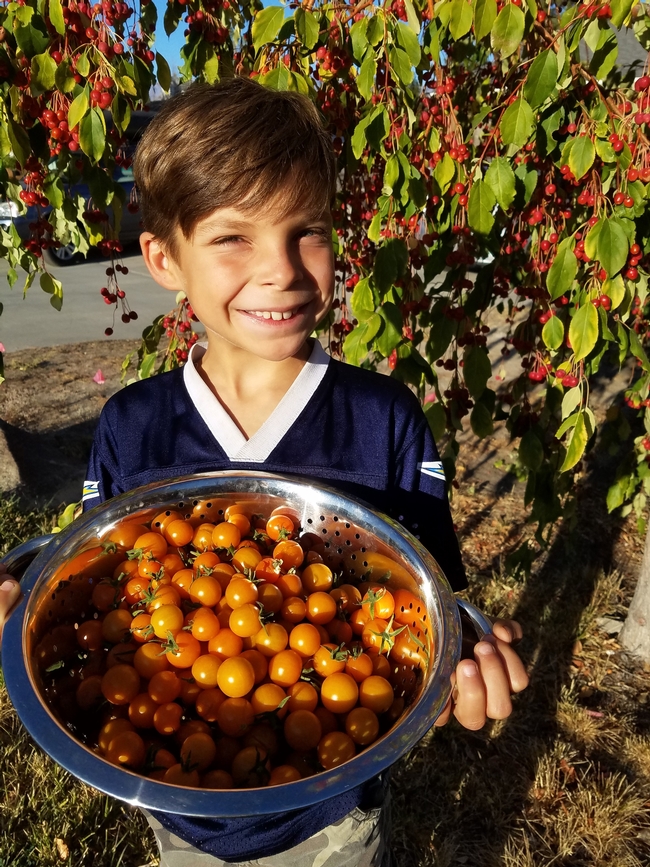Every parent has been there. You spend an hour chopping and stir frying veggies and cooking up that perfect sauce just to hear, “This is gross!” or “I'm not hungry!” as your children make disgusted faces and unenthusiastically poke at the food on their plates. You're goal: to feed your children healthy delicious meals. Their goal: to eat dessert or unhealthy snacks instead. We've all given the lecture, “You should be grateful you have healthy food to eat because a lot of children go hungry.” I've even sermonized to my three kids about all of the people and work it took to put that meal on their plates.
Nothing, however, is more powerful than doing. Getting my kids out in the garden involved in the growing of their food has been the most effective “trick” to getting them to eat vegetables. They eat everything from chives to tomatoes straight out of the garden, especially when I tell them to “Stop eating all of my vegetables!”
The most important component to successful gardening with children is, you guessed it, FUN! We bought our kids colorful kid-sized gardening tools and gloves. These were gleefully accepted with a shout of “toys!” Next, get rid of any ideas you have of how your kids are going to garden. After making the mistake of expecting my kids to garden in a neat and orderly way following my directions and ending up nagging them to death, I learned instead to designate a plot in the garden for each child, let them pick out their plants or seeds at the nursery, and then, after some light instruction, I let them go at it in their own way. Sometimes things grew, and sometimes they didn't. It's all part of the learning experience.
In addition to eating from the plants in the garden, gardening has been healthy for my kids in several ways. They are getting outside and moving their bodies instead of sitting in front of their electronic device of choice. They are building skills and abilities which make them feel confident, especially when they see something they planted grow and produce. They are learning experimentally about the soil, how plants grow, and the bugs and birds that rely on the plants. Most importantly, they are sharing the experience with you!


